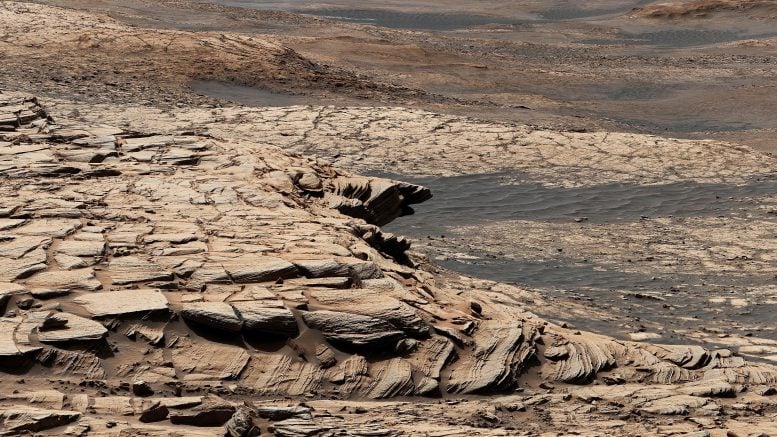Penn State University researchers write:
New evidence for an ancient northern ocean on Mars has been uncovered in a recently released set of topography maps. These maps offer the strongest case yet that the planet once experienced sea-level rise consistent with an extended warm and wet climate, which was far different than the harsh, frozen landscape that exists today.

“What immediately comes to mind as one the most significant points here is that the existence of an ocean of this size means a higher potential for life,” said Benjamin Cardenas, assistant professor of geosciences at Penn State and lead author on the study recently published in the Journal of Geophysical Research: Planets. “It also tells us about the ancient climate and its evolution. Based on these findings, we know there had to have been a period when it was warm enough and the atmosphere was thick enough to support this much liquid water at one time.”
Whether Mars had an ocean in its low-elevation northern hemisphere has long been debated in the scientific community, Cardenas explained. Using topography data, the research team was able to show definitive evidence of a roughly 3.5-billion-year-old shoreline with substantial sedimentary accumulation, at least 900 meters (3,000 feet) thick, that covered hundreds of thousands of square kilometers.
Using software developed by the United States Geological Survey, the research team generated the maps with data from the National Aeronautics and Space Administration (NASA) and the Mars Orbiter Laser Altimeter. They discovered over 6,500 kilometers (4,000 miles) of fluvial ridges and grouped them into 20 systems to show that the ridges are likely eroded river deltas or submarine-channel belts, the remnants of an ancient Martian shoreline.
On Earth, the ancient sedimentary basins contain the stratigraphic records of evolving climate and life, explained Cardenas. If researchers want to locate a record of life on Mars, an ocean as big as the one that once covered Aeolis Dorsa would be the most logical place to start.
“A major goal for the Mars Curiosity rover missions is to look for signs of life,” Cardenas said. “It’s always been looking for water, for traces of habitable life. This is the biggest one yet. It’s a giant body of water, fed by sediments coming from the highlands, presumably carrying nutrients. If there were tides on ancient Mars, they would have been here, gently bringing in and out water. This is exactly the type of place where ancient Martian life could have evolved.”
The stratiographic analysis these researchers carried out to show records of large waterways on Mars is certainly interesting and valuable science. But, to borrow a phrase, what immediately comes to mind as one of the most significant points here, is that to assume that the existence of surface water on a planet can somehow naturally lead to life is to depart from the realm of established science.